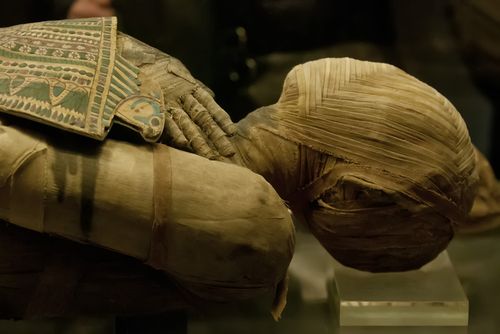 When anthropologists study the remnants of long-gone civilizations, they utilize specific “markers” to denote the advancement of the society being studied. One of the biggest signs that ancient people had started to show signs of modern humanity is the discovery of burial sites. The simple act of burying the body of a loved one in the ground as a final resting place is a practice that extends farther back than recorded history allows. However, it is far from the only method humans have explored when it comes to funerary rituals. Explore these examples to learn more about these traditions.
When anthropologists study the remnants of long-gone civilizations, they utilize specific “markers” to denote the advancement of the society being studied. One of the biggest signs that ancient people had started to show signs of modern humanity is the discovery of burial sites. The simple act of burying the body of a loved one in the ground as a final resting place is a practice that extends farther back than recorded history allows. However, it is far from the only method humans have explored when it comes to funerary rituals. Explore these examples to learn more about these traditions.
“It’s All Greek to Me”
The Ancient Greeks used funeral customs that are quite similar to current practices. When someone passed away, family and friends would clean the body and anoint it with oils. The deceased would then be put on display in the family home so that people could stop by and pay final respects. This is quite similar to the modern practice of hosting a wake for someone who has died.
Unlike the Ancient Egyptians, who are known for burying their dead with all manner of decadent and expensive objects, the Ancient Greeks focused more on the headstones and grave markers. Typically, these would be carved from marble and decorated in ornate ways.
Up, Up and Away
In recent months, a video went viral on TikTok when it seemed to depict a woman chopping up the remains of a human skeleton and feeding it to nearby vultures. Though shocking without context, it was later revealed to be a rare recording of a Tibetan sky burial and there was no nefarious activity involved. A sky burial involves taking the body of the deceased and cutting it into smaller pieces, then scattering the parts atop a high mountain for birds and animals to consume.
This Tibetan Buddhist custom is meant to place the deceased in the circle of life, allowing animals, insects and even plants to consume and be enriched by the decomposing body. The body is placed high on a mountain so that it is easier for the soul of the deceased to ascend to the heavens.
Finding Space
Some countries have strict rules around burying bodies, especially in areas where space is limited. A law passed in 2000 in South Korea, for example, dictated that bodies could only be in a burial plot for 60 years. After this, the family must exhume the body and cremate it. This has led to a rise in popularity of items that contain the ashes of loved ones. Jewelry like “death beads,” which are crafted using ashes, have become both a sentimental and thoughtful way to honor the departed.
Interestingly, many South Koreans do not engage in the practice of scattering ashes. While people in Western cultures often scatter ashes in places that held significance to the departed, this is not viewed as an adequate way of honoring the deceased in South Korean tradition.
A Public Affair
In places like the United States, cremations are typically conducted in specific buildings and handled by trained professionals. However, many countries make this act a public spectacle that involves family, friends, and neighbors of the deceased. In India, one tradition involves parading the body of the departed through the streets. The body will be dressed in bright colors and anointed with water from the Ganges River before being taken to a public area and cremated before the crowd. By making the act a public spectacle, the entire community is given a chance to say goodbye to the deceased.
Saying Goodbye
While humans have been burying their dead for as far back as history allows, this is only one of an array of methods that have been used over the years. At the center of all these traditions, however, is a deep desire to show respect and honor to one who has passed on from this life.



